A Consumer Guide to the Trailing Edge: August, 2013
Recycled Goods (#111)
by Tom Hull
Current planning calls for another run at the 1960s in September. I figured I'd take a break this month to catch up with whatever came my way, which turned out to mostly be jazz reissues, although I started ith the early 1970s Stevie Wonder discs that didn't fit into the last 1960s bash, and a Bobby Bland compilation I'd heard about (although there are more I didn't get to).
Then I figured I should write up the Hatology records I bought super-cheap a while back (JazzLoft has had several sales, including one as I write this). And I found George Russell's Trip to Prillarguri on Rhapsody, misfiled under Jan Garbarek's name. I had it unrated in my database, probably an old dimly-remembered LP, so figured I'd take the time to check it off -- and it turned out to be the month's pick hit. That got me looking for other Soul Note releases, and there looks to be quite a few if you dig deep enough, as often Rhapsody misfiles them under other musicians (e.g., two of the Don Dixon records below were filed under the name of tuba player John Buckingham). I eventually found all of Russell's Soul Note releases (some originally on Sonet or Flying Dutchman), so this month offers a major wrap up of one of the 20th century's greatest and most influential jazz musicians.
It turns out that it is now possible to get most of Russell's work cheap in two boxes: Seven Classic Albums (Real Gone, 4CD) gets you New York, NY, Jazz in the Space Age, Stratusphunk, In K.C., Ezz-Thetics, The Stratus Seekers, and The Outer View, for $17.99 list. Real Gone is taking advantage of Europe's 50-year copyright limit, so I wouldn't be surprised if sound and/or packaging suffer, but I've seen this as cheap as $9.09. (Too bad it misses the two best early albums: Jazz Workshop, and At the Five Spot.) Then there is The Complete Remastered Recordings on Black Saint and Soul Note, a 9-CD set that includes most of the reviewed records below, and lists for $39.97. This is more legit: CAM Jazz acquired the rights to the Black Saint and Soul Note catalogs, took their individual titles out of print, and started to collect them in all-or-nothing boxes. If I were writing the Recycled Goods column of my dreams -- one that tracked everything that is being reissued today -- I could have structured a big part of this column around those two boxes. Alas, I have neither, but it turns out that all of the original albums are on Rhapsody, so instead all I've done below is to fill in the holes in my database listings.
There are a bunch of Black Saint/Soul Note boxes available now: in addition to Russell, I see: Muhal Richard Abrams, George Adams, Lester Bowie, Anthony Braxton, Bill Dixon, Dave Douglas, Jimmy Giuffre, Charlie Haden, Julius Hemphill, Lee Konitz, Steve Lacy, George Lewis, Paul Motian, David Murray (Octets), Enrico Pieranunzi, Enrico Rava, Don Pullen, Cecil Taylor, Henry Threadgill, Mal Waldron, and World Saxophone Quartet. It isn't much of an exaggeration to say that Black Saint/Soul Note owner Giovanni Bonandrini single-handedly saved avant-jazz in the 1980s. I probably have close to half of the original album titles, and probably the better half, so I'm not sure the boxes work for me, but they are some kind of deal if you're starting out.
It would be a big project just to list those out, let alone fill in the holes and assess which boxes are the finest bargains. I made a small start on Bill Dixon below, listening to the five Dixon albums (out of nine) I hadn't heard before. I picked him not because I'm much of a fan -- previously graded albums not here are: B+ (In Italy: Volume 1), B- (In Italy: Volume 2), B (Vade Mecum), B (Vade Mecum II) -- probably because I'm not but he's highly regarded and certainly capable of occasional brilliance.
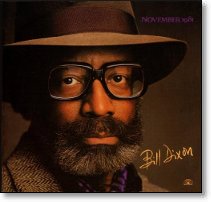 |
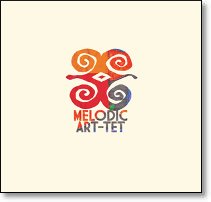 |
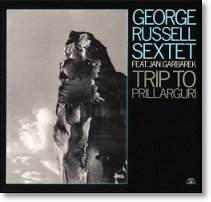 |
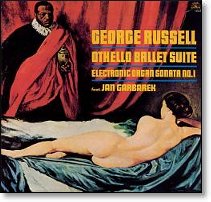 |
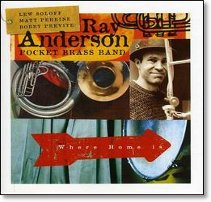 |
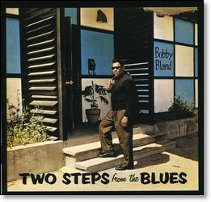 |
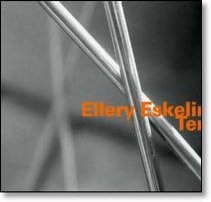 |
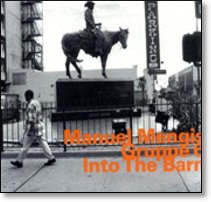 |
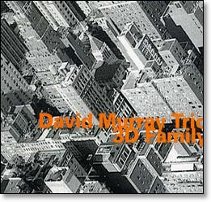 |
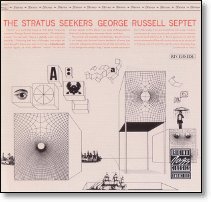 |
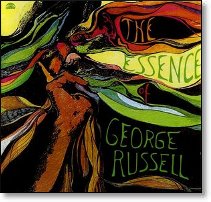 |
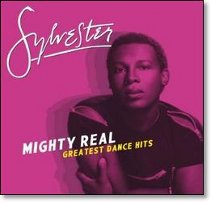 |
Bill Dixon: November 1981 (1981 [1982], Soul Note): Avant-garde trumpet player, gained some fame (or notoreity) playing with Cecil Taylor in the 1960s, cut a series of intimate and difficult albums for Soul Note 1980-98, and staged a surprising comeback with big band albums from 2007 to his death in 2010. This is backed by two bassists (Alan Silva and Mario Pavone) and drums (Laurence Cook), the basses a complex, bubbling substrate for the trumpet to cut against, or just bounce along; and when they do cut back, the trumpet looms even more eloquently. A- [R]
Melodic Art-Tet (1974 [2013], No Business): Quartet, originally formed in 1970 by saxophonist Charles Brackeen and three members of Sun Ra's entourage: Ahmed Abdullah (trumpet), Ronnie Boykins (bass), and Roger Blank (drums). They played in lofts, never released an album, but cut this at WKCR in 1974, with a very young William Parker taking over the bass slot, and Tony Waters on percussion. Four pieces (17, 20, 30, 12 minutes), free with funk overtones, the reeds -- flute and soprano as well as tenor sax -- not as clear as you'd like, but Abdullah turns into a force of nature, and the second half is so ship-shape you could sail to Saturn. A-
George Russell Sextet: Trip to Prillarguri (1970 [1982], Soul Note): One of the major figures in jazz history, pianist Russell spent the late 1960s in self-imposed exile in Norway, and this is the finest fruit of his labors: a group with four young musicians fast on their way to becoming major figures: Jan Garbarek (tenor sax), Terje Rypdal (guitar), Arild Andersen (bass), and Jon Christensen (drums) -- Stanton Davis, Jr. (trumpet) is the only one who went nowhere. Rypdal is terrific, but Garbarek is titanic here, playing with a raw force and edginess that ECM never allowed, especially on the 11-minute Ornette Coleman finale. A [R]
George Russell: Othello Ballet Suite/Electronic Organ Sonata No. 1 (1967-68 [1981], Soul Note): These two pieces were preliminary exercises in future "third stream" -- where academics like Gunther Schuller looked to merge jazz and classical, Russell plotted to make jazz the foundation for future classical music. In Scandinavia, he employs the Swedish Radio Symphony Orchestra, trumpeter Rolf Eriksson, the two great Swedish saxophonists of the time (Arne Domnerus and Bernt Rosengren), and young Norwegian protégés Jan Garbarek and Jon Christensen. The "Suite" is dense, a feast for the horns. The second side is a pioneering exercise in electronics playing off Russell's organ -- possibly an attempt to counter Riley and Reich with something more rooted in jazz. A- [R]
Briefly Noted
Ray Anderson Pocket Jazz Band: Where Home Is (1998 [1999], Enja): The trombonist's brass band, with Matt Perine's sousaphone handling the bass, Lew Soloff's trumpet hitting the high notes, and drummer Bobby Previte hitting everything else; bridging avant and antique, especially when they reach back for Joplin ("The Pineapple Rag") and Ellington ("The Mooche"). A- [R]
Lurrie Bell: Young Man's Blues: The Best of the JSP Sessions (1989-90 [1997], JSP): Son of harpist Carey Bell, his earliest sides already bound tightly to the classic Chicago blues tradition; Bell proves to be an adept guitarist and singer, but the sides with his dad's harmonica really stand out. B+(***) [R]
Bobby Bland: Two Steps From the Blues (1956-60 [1961], Duke/MCA): Seven new songs salted with five older singles, long regarded as his LP-era best-of, although in the CD era you can heftier sets that maintain the quality level far longer, all the way up to I Pity the Fool: The Duke Recordings, Vol. 1 (1952-60 [1992], MCA, 2CD), which collects 10 of 12 songs here (and 34 more); on the other hand, the 2012 Soul Jam reissue tacks on 12 "bonus tracks," which make this yet another way to dive into his deep and disorganized discography. A- [R]
John Carter-Bobby Bradford Quartet: Seeking (1969 [2006], Hatology): Legendary pianoless (two horn) group, with Carter playing more sax (alto and tenor) than I'd expect, especially given how his clarinet (if not the flute) takes off; Bradford's trumpet keeps pace. B+(***)
Bill Dixon: Thoughts (1985 [1987], Soul Note): A rather murky production for a relatively large production -- Marco Eineidi on alto sax, John Buckingham on tuba, Lawrence Cook on drums, and three great bassists -- Mario Pavone, William Parker, and Peter Kowald; Dixon's trumpet is as scrawny as ever, and while no one doubts that a lot of thought went into it, there is very little here to pique your interest. B- [R]
Bill Dixon: Son of Sisyphus (1988 [1990], Soul Note): Starts with Dixon playing piano, an uneventful twist before the trumpet takes over; with Mario Pavone on bass, Laurence Cook on percussion, and John Buckingham on tuba -- the tuba adding resonance as the trumpet picks its way through what is ultimately a long, slow slog. B [R]
Bill Dixon with Tony Oxley: Papyrus: Volume I (1998 [1999], Soul Note): Trumpet-percussion duets, although Dixon again leads off with a bit of piano; it threatens to fall into the slow rut that makes so many of Dixon's Soul Notes so difficult; Oxley don't mind slow but can't stand lazy, so he keeps prodding and gets something interesting in return. B+(**) [R]
Bill Dixon with Tony Oxley: Papyrus: Volume II (1998 [2000], Soul Note): A second volume of trumpet-percussion duets (with a bit of Dixon piano), from the same sessions, with similar results -- most critics downgrade these a bit but I don't find much difference, may even give this a slight edge. B+(**) [R]
Ellery Eskelin: Ten (2004, Hatology): Six musicians, twelve songs, so don't get the title, the tenor saxophonist's basic trio expanded with electric guitar (Marc Ribot) and bass (Melvin Gibbs), plus vocalist Jessica Constable, a little too arch and arty for me, yet she adds something -- soul maybe -- while the sax is terrific and Andrea Parkins' strategies are as oblique as ever. A-
Georg Graewe/Ernst Reijseger/Gerry Hemingway: Sonic Fiction (1989 [2007], Hatology): Piano-cello-drums free jazz trio, the tone and temper between the tinkly piano and the prickly cello, with percussion toned down to the same sonic range, neither driving nor lagging. B+(***)
Art Hodes: I Remember Bessie (1976 [2013], Delmark): Pianist, b. 1904 in Russia, not sure when he moved to Chicago but he didn't start recording until he moved to New York in 1938. Smith died in 1937, so they could have crossed paths in Chicago, but most likely he remembered her from records. Solo piano, old blues with some swing to them, the style Hodes grew up on and was exceptional at. B+(***)
Theo Jörgensmann: Fellowship (1998 [2005], Hatology): German clarinet player, has at least 15 albums since 1978; sextet with two saxophonists -- Charlie Mariano on alto and Petras Vysniauskas on soprano -- and Karl Berger doubling up on vibes and piano, working on three long pieces with many sharp passages but also some indecision. B+(**)
Franz Koglmann: L'Heure Bleue (1991 [2003], Hatology): German trumpet player, a big fave of The Penguin Guide's authors, one I've never really gotten into; he's slow and methodical, working with a drummer-less quartet with Tony Coe (clarinet, tenor sax) and Burkhard Stangl (guitar) or a duo with Misha Mengelberg (piano), some abstract originals, thoughtful covers. B+(***)
Jeffrey Lewis: The Last Time I Did Acid I Went Insane and Other Favorites (2002, Rough Trade): Cartoon artist tries his hand at sketching out anti-folk songs, with slapdash guitar, slapdash stories too. B+(*) [R]
Jeffrey Lewis: It's the Ones Who've Cracked That the Light Shines Through (2003, Rough Trade): Second album, anti-folk, but a big advance musically, whether he's running his monotone over a minimally repeating pattern or building something more elaborate, or even rocking out. B+(***) [R]
Joe McPhee: Survival Unit II With Clifford Thornton N.Y. N.Y. 1971 (1971 [2006], Hatology): An early live shot that came out much after the fact, McPhee plays trumpet and tenor sax, with Thornton on baritone horn, Byron Morris on soprano and alto sax, Mike Kull on piano, and Harold Smith on percussion -- no bass to hold such taut music together; impressive work by the headliners, but the soprano can get whiney, and the length (78:45) adds up to a bit much. B+(***)
Joe McPhee/Lisle Ellis/Paul Plimley: Sweet Freedom -- Now What? (1994 [2008], Hatology): As resolute a believer in freedom as anyone can be, yet McPhee's sax as well as clarinet is underwhelming here, balanced to give his partners (bass and piano, respectively) equal time and access, an opportunity which Plimley, at least, makes the best of. B+(**)
Manuel Mengis Gruppe 6: Into the Barn (2004 [2005], Hatology): Swiss trumpet player, first record, the sextet adding two saxes for vigorous front-line clash, electric guitar and bass and drums for power drive. A-
Roscoe Mitchell Quartet: Live at "A Space" 1975 (1975 [2013], Sackville/Delmark): The Art Ensemble of Chicago's saxophonist's arsenal includes alto, tenor, and B-flat soprano sax, the latter featured in the centerpiece here, contrasted with George Lewis' trombone; also present are pianist Muhal Richard Abrams, who seems peripheral, and guitarist Spencer Barefield, but the main thing is the showcase for Lewis; reissue adds 19:36 to the 1975 LP. B+(**)
David Murray Trio: 3D Family (1978 [2006], Hatology): Early in Murray's career, just before the Black Saint recordings that established his career and effectively ended the decade-long exile of the avant-garde to the lofts of New York; live in Willisau with South Africans Johnny Dyani on bass and Andrew Cyrille on drums, a bit on the crude side but bursting with the raw force of creation. A-
George Russell Sextet: In K.C. (1961, Decca): Russell's first great album was called Jazz Workshop (1956), and he continued to cultivate unknowns in his personal vision of postbop; this is a live workshop, with Don Ellis (trumpet), Dave Baker (trombone), Dave Young (tenor sax), Chuck Israels (bass), Joe Hunt (drums), with just one piece by Russell, two by Baker, one by another Russell student (Carla Bley), and two by famous trumpet players. B+(**) [R]
George Russell Septet: The Stratus Seekers (1962 [1989], Riverside/OJC): Don Ellis plays trumpet here, and his mad rush for the high notes recalls Russell's early association with Gillespie and the ferocity of vintage bebop, while saxophonist Paul Plummer gets the unenviable task of following Coltrane's explorations of model improvisation (another Russell innovation). A- [R]
George Russell: The Outer View (1962 [1991], Riverside/OJC): Sextet, the three horns don't break out of the tricky compositions as on the previous album, but the postbop ambitions are similar; two more Russell discoveries: composer Carla Bley, who had debuted on his 1960 Stratusphunk, and Sheila Jordan, who sings a very striking "You Are My Sunshine." B+(***) [R]
George Russell: The Essence of George Russell (1966-67 [1983], Soul Note): First hour-long take of "Electronic Sonata for Souls Loved by Nature" -- a later, shorter version was released under that name by Flying Dutchman -- caught live with a crackling Scandinavian big band, not much electronics but a marvelous piece of scoring, finished off with a 15-minute "Now and Then" -- a smaller band determined to sound larger. A- [R]
George Russell: Listen to the Silence (1971 [1983], Soul Note): Commissioned by the Norwegian Cultural Fund, performed in Kongsberg Church, the big band is short on horns -- just Stanton Davis on trumpet and Jan Garbarek on tenor sax -- but has organ and electric piano/guitar/bass, and lots of vocals, some choirlike but most spoken against the grain; I don't care for the vocals, but the passages without them are striking. B [R]
George Russell: Vertical Form VI (1977 [1981], Soul Note): Commissioned by Swedish Radio, another big band piece where the big band is augmented by electric keybs and bass for a consistent, almost funky pulse, and the horns generally hold back -- at least avoid the rowdiness Russell picked up from Gillespie, not that they can't swell and flutter. B+(**) [R]
George Russell: New York Big Band (1977-78 [1982], Soul Note): Actually, one track -- Russell's Gillespie classic, "Cubana Be, Cubana Bop" -- was cut in Sweden with a mostly Swedish ensemble, but the 1978 tracks let the New Yorkers -- prominent names include Lew Soloff, Marty Ehrlich, Ricky Ford, Cameron Brown, and Warren Smith -- strut their stuff; Lee Genesis belts out "Big City Blues" and "God Bless the Child." B+(***) [R]
John Scofield: Still Warm (1985 [1986], Gramavision): Early album, not as firmly anchored as his later groovers, not a lot of variety either; more interesting was Don Grolnick on electric keybs. B [R]
Zoot Sims: Compatability (1955 [2013], Delmark): Four tracks first released as Hall Daniels Septet, then more takes in 1977 under Sims and Dick Nash, plus more takes of the same four songs; Sims can claim them because he went on to a major career, but the key things here are section-work and swing. B+(*)
Sun Ra: The Sun Ra Arkestra Meets Salah Ragab in Egypt (1971-84 [1999], Leo Golden Years of New Jazz): Three 1983-84 tracks by the Arkestra with the Egyptian percussionist, long on drum solo, plus four earlier tracks by Ragab, the Cairo Jazz Band, and/or the Cairo Free Jazz Ensemble; the latter half turns out to be much the more interesting one, in a similar vein. B+(**) [R]
The Sun Ra Arkestra: Live at Praxis '84 (1984 [2000], Leo Golden Years of New Jazz, 2CD): Originally released on three LPs, it's hard to imagine any of the six sides being truly compelling, but over 111:35 the kitsch mounts up -- the chants early on, the Fletcher Henderson tunes, "Cocktails for Two," "Satin Doll," "Days of Wine and Roses," a scabrous "Mack the Knife," and no shortage of space riffs, not to mention spacey vamps. B+(***) [R]
Sun Ra & His Intergalactic Arkestra: Second Star to the Right (Salute to Walt Disney) (1989 [1995], Leo): A surprise contributor to Hal Willner's Stay Awake: Various Interpretations of Music From Vintage Disney Films, Ra couldn't help but fill out a whole album, his group vocals cutting all the saccharine out of songs like "Zip a Dee Doo Dah" and "Whistle While You Work" while kicking the horns up a notch and swinging like hell. B+(***) [R]
Sun Ra & His Cosmo Discipline Arkestra: A Night in East Berlin/My Brothers the Wind & Sun No. 9 (1986-90 [1995], Leo): Live, originally two LPs, the seven tracks from Berlin long on space grunge, the 20:49 finale of uncertain providence (1988 or 1990), but with Ahmed Abdullah and Billy Bang joining in. B+(*) [R]
Sun Ra and the Year 2000 Myth Science Arkestra: Live at the Hackney Empire (1990 [1994], Leo, 2CD): Rather late in the day -- the leader was past 75, only a couple more years to live -- but the long vamp pieces drive home the band's relentless search, and the vocal bits, the toy piano, the interpolated covers, the occasional squeals, all reiterate the oddness and whimsy at the heart of the leader's vision -- if you want to talk about a band taking "a long, strange trip" none other rivals the Arkestra. B+(***) [R]
Sylvester: Mighty Real: Greatest Dance Hits (1977-81 [2013], Fantasy): San Francisco disco star, openly gay, had a string of dancefloor hits off the five albums he cut for Fantasy, crammed here into 79:08 and programmed for, no surprise, dancing. A- [R]
Stevie Wonder: Signed, Sealed and Delivered (1970, Tamla): More hit and miss, even if he finally shows some evidence of moving out from long-time handlers Henry Cosby and Ron Miller, they're still hanging on. B+(**) [R]
Stevie Wonder: Where I'm Coming From (1971, Tamla): Thirteenth album, but coming up on his 21st birthday, the first one he had full control over, his main collaborator wife Syreeta Wright, who shared credit on the songs; most of the songs are reaching for things they can't quite grasp, but "If You Really Love Me" was his first mature masterpiece. B+(***) [R]
Legend: B+ records are divided into three levels, where more * is better. [R] indicates record was reviewed using a stream from Rhapsody ([X] is some other identified stream source; otherwise assume a CD). The biggest caveat there is that the packaging and documentation hasn't been inspected or considered, and documentation is especially important for reissues. But also my exposure to streamed records is briefer and more limited, so I'm more prone to snap judgments -- although that's always a risk.
For this column and the previous 110, see the archive. Total records reviewed: 3787 (3343 + 444).
Additional Consumer News
Notes
Copyright © 2013 Tom Hull.